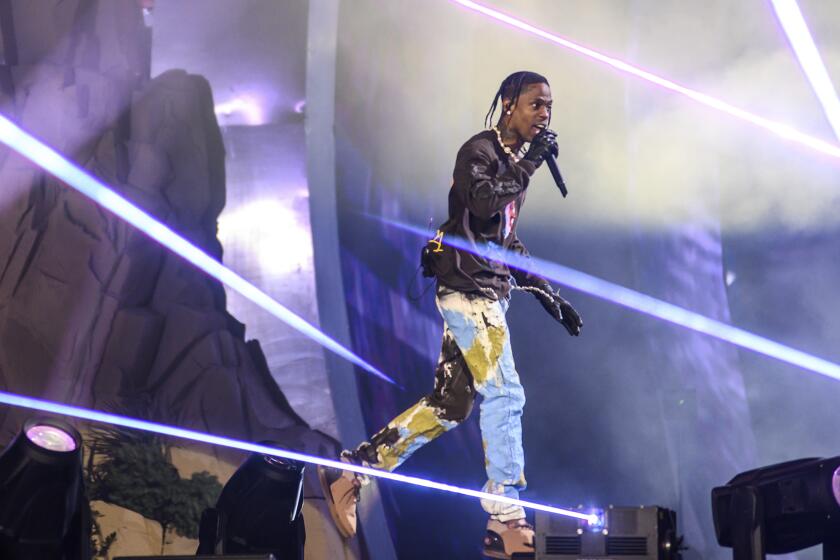Critic’s Pick: Music Walk in Carlsbad and a ‘Parade’ at the Hammer

With a hot week endured and temperatures expected to moderate over the weekend, Saturday seems like an ideal day to stroll a beach town where you can encounter new music in nearly every nook and cranny. The Carlsbad Music Festival, founded by composer Matt McBain 11 years ago is, each year, more impressive.
McBane has moved on to the Brooklyn scene (what composer hasn’t?) but returns each year, often with other Brooklynites in tow, as well as old friends and mentors from USC.
A tradition is the Music Walk, Saturday from 3 to 11 p.m. Walk and listen. Musicians will be everywhere in parking lots, cafes, a Realtor’s office, a record store, a juice shop.
The more formal festival, itself, begins Friday night with a concert by pipa star Wu Man and includes various new music groups from San Diego and Los Angeles.
David Lang -- whose new percussion concerto, “man made,” will open the Los Angeles Philharmonic season at Walt Disney Concert Hall in October -- is Carlsbad’s featured composer. Lang’s “darker,” an hour-long work for a dozen strings, will have its U.S. premiere on Sunday.
The “parade” then moves to the Hammer on Tuesday, when UCLA’s museum will show the U.S. premiere of a new cinematic reinterpretation of Satie’s 1917 ballet, “Parade.” One of the 20th century’s great collaborations, “Parade” has a surreal scenario by Jean Cocteau and Cubist décor and costumes by Picasso. Massine did the choreography.
The premiere in Paris’ Théatre du Chatelet provoked a riot, which was wilder, if less notorious, than the one four years earlier in Paris at the premiere of Stravinsky’s “Rite of Spring.”
What wasn’t to like? Everything!
The war-weary audience, which attacked the artists with hat pins or anything else handy, found the ballet “Teutonic” and “Bolshevik.” Cubism was still considered crazy. Satie’s kitchen-sink score sunk to the level of music hall for some, to insane noise (he used a typewriter and a police siren in the percussion section) to others. Now, we know it to have been one of the most extraordinary commissions of Diaghilev’s Ballets Russes.
Now the artist Shahryar Nashat and choreographer Adam Linder have produced a new version of the ballet with three dancers and the use of the camera “as a passive witness to performance and dance.” The creators will be on hand to discuss their work after the screening.
Twitter: @markswed
More to Read
The biggest entertainment stories
Get our big stories about Hollywood, film, television, music, arts, culture and more right in your inbox as soon as they publish.
You may occasionally receive promotional content from the Los Angeles Times.







